
As in-car entertainment systems provide more interpretations for vehicles, Chinese consumers’ attention to entertainment systems is increasing day by day. In the J.D. Power (君迪) China Automotive Appeal Index Study (APEAL), the weight of entertainment systems ranks first in various sub-markets, indicating that consumers’ preferences for entertainment systems profoundly affect their attractiveness ratings for vehicle models, thus influencing sales. Entertainment systems are bound to become a battleground for future manufacturers. Recently, Huang Yanling and Pei Lin, directors of the automotive product division at J.D. Power China, provided insightful interpretations regarding Chinese consumers’ demands for automotive entertainment systems.
To Wear the Crown, One Must Bear Its Weight
While in-car entertainment systems gain more attention, they are also subjected to higher demands. In the J.D. Power New Vehicle Quality Study, questions related to in-car entertainment systems only accounted for 5.5% of the total survey questions, but the proportion of complaints from Chinese consumers regarding entertainment systems has increased from 3% in 2010 to 10% in 2018.

What are Chinese consumers complaining about regarding entertainment systems? What are the differences compared to the U.S. market? In the following chart, we can see the top three issues complained about in both the Chinese and American markets:
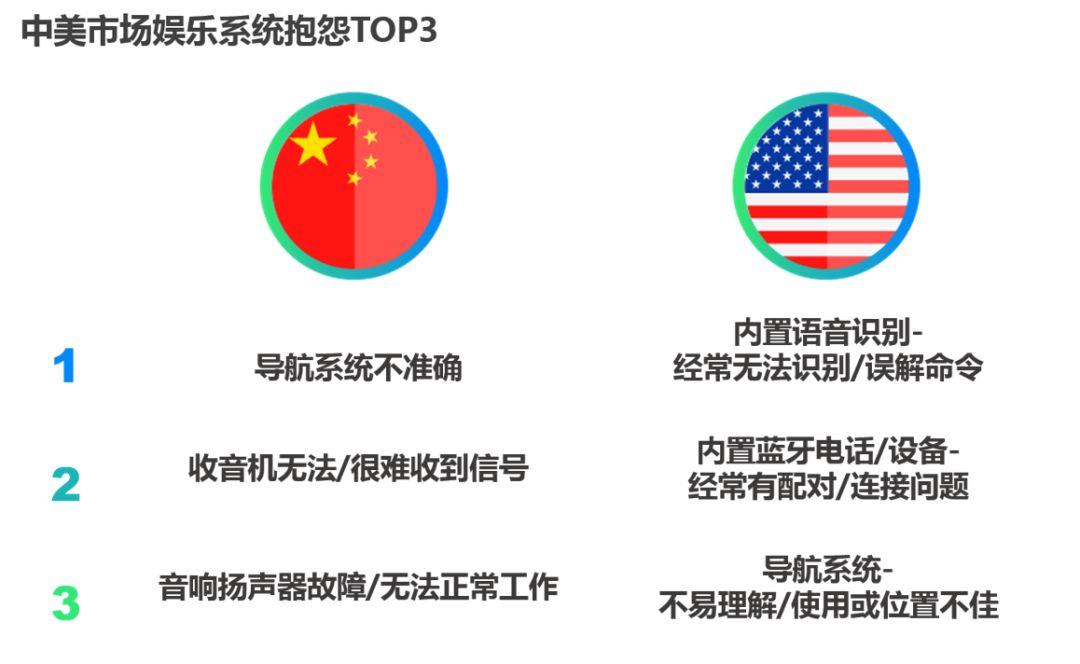
It is worth noting that issues such as speaker malfunctions/unable to function properly are expected to see a significant increase in the future, due to the rising quality demands of Chinese consumers for entertainment systems. Problems with poor sound quality and noise will become more pronounced; additionally, due to the complex road and traffic conditions in the country, issues with inaccurate navigation systems are also expected to rise slightly in the near future. As consumers’ quality demands for entertainment systems increase, there will be a greater emphasis on improving the overall level of in-car entertainment systems.
The differences between Chinese and American consumers mainly depend on the configuration rates of entertainment systems and the differences in consumer usage experiences. Just by observing the configuration rates of Bluetooth and built-in voice recognition systems, we can see that there is still a significant gap between the Chinese and American markets.
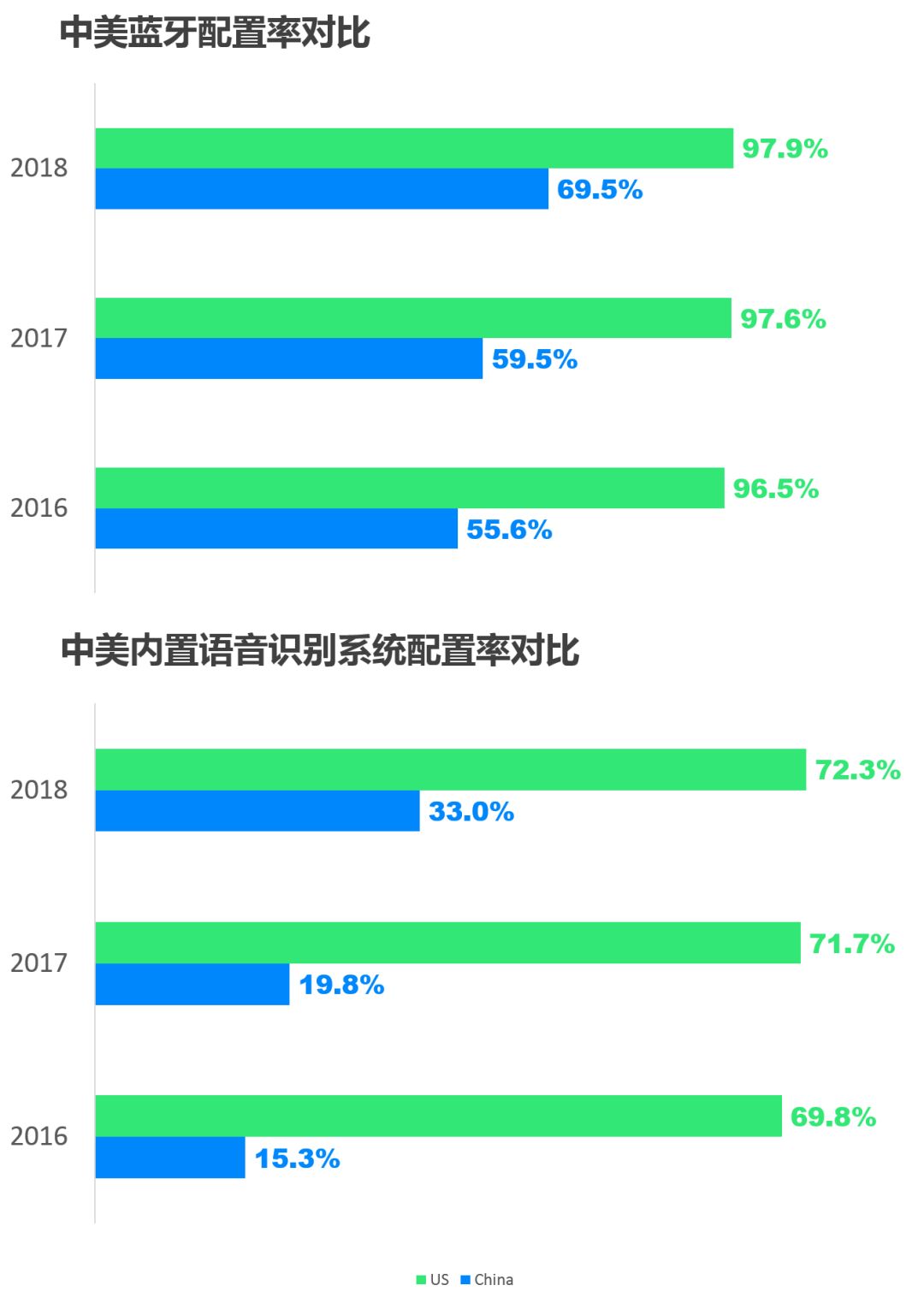
However, this also means that the issues highlighted by American consumers can serve as a warning for the Chinese market. With the increasing configuration rates of entertainment systems in the Chinese market and the rising proportion of consumers purchasing second-hand vehicles, issues such as built-in voice recognition frequently failing to recognize or misinterpreting commands, Bluetooth pairing connection issues, and navigation systems being difficult to understand or having poor positioning are expected to rise significantly. Manufacturers need to enhance their focus on the convenience of vehicle-machine interaction.
Myths in Entertainment System Development
As in-car entertainment systems rapidly develop, controversies abound. For example: Do entertainment systems interfere with driving? Which entertainment system functions have low usage rates and merely increase costs? Regarding these three common issues, Huang Yanling, director of the automotive product division at J.D. Power China, has proposed some answers.
Is it necessary to add Apple CarPlay to the entertainment system?
Currently, the configuration rate of Apple iPhone users ranges from 56% in first-tier cities to 43% in fourth-tier cities, but the configuration rate of Apple CarPlay in vehicles is only 1.3%. Is this a market opportunity? According to J.D. Power data, Apple CarPlay users use this system far less frequently than Android users.
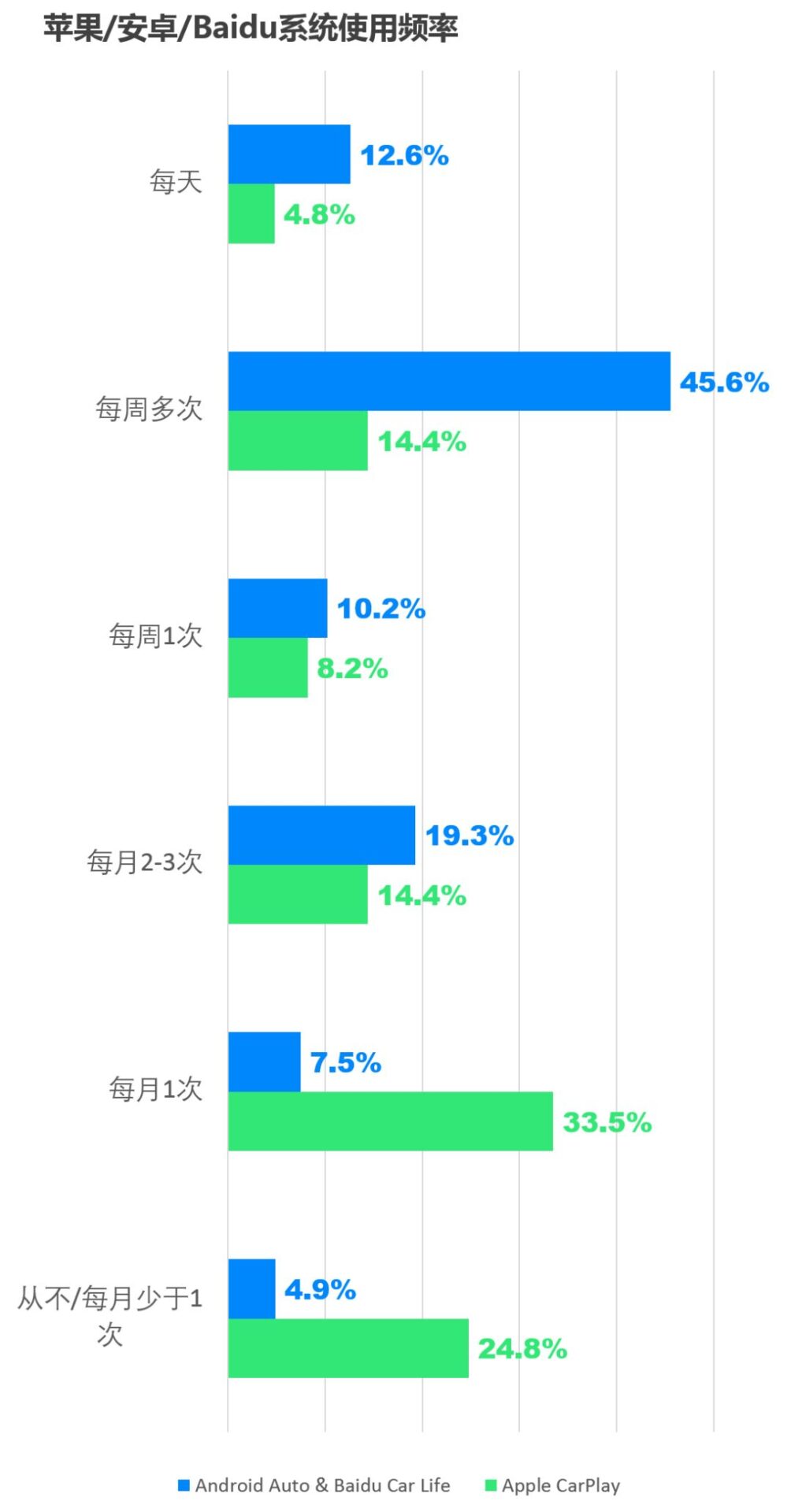
The reason is that the current limitations of Apple CarPlay are quite significant; most iPhone users do not experience substantial functional advantages with this system, and Baidu Car Life can meet the needs of a segment of Apple users after integration, making it likely to be replaced. Although Apple CarPlay has advantages like system stability and features such as Siri and iReader, car manufacturers still need to consider it based on the cost situation of the vehicle models.
Can AM channels and CD players be eliminated?
According to J.D. Power data, from 2015 to 2018, the usage rate of CD players dropped from 45.9% to 23%, and this trend is expected to continue. In contrast, the proportion of using external audio sources such as MP3 and mobile phones to play music has continuously risen from 17.4% in 2015 to 33% in 2018. The usage rate of AM channels saw a slight decline from 2015 to 2017, but in 2018, the usage rate quickly rebounded to 16.7%. There is still a portion of consumers in the market who have a certain demand for broadcast news frequency, so the disappearance of AM is expected to slow down gradually.
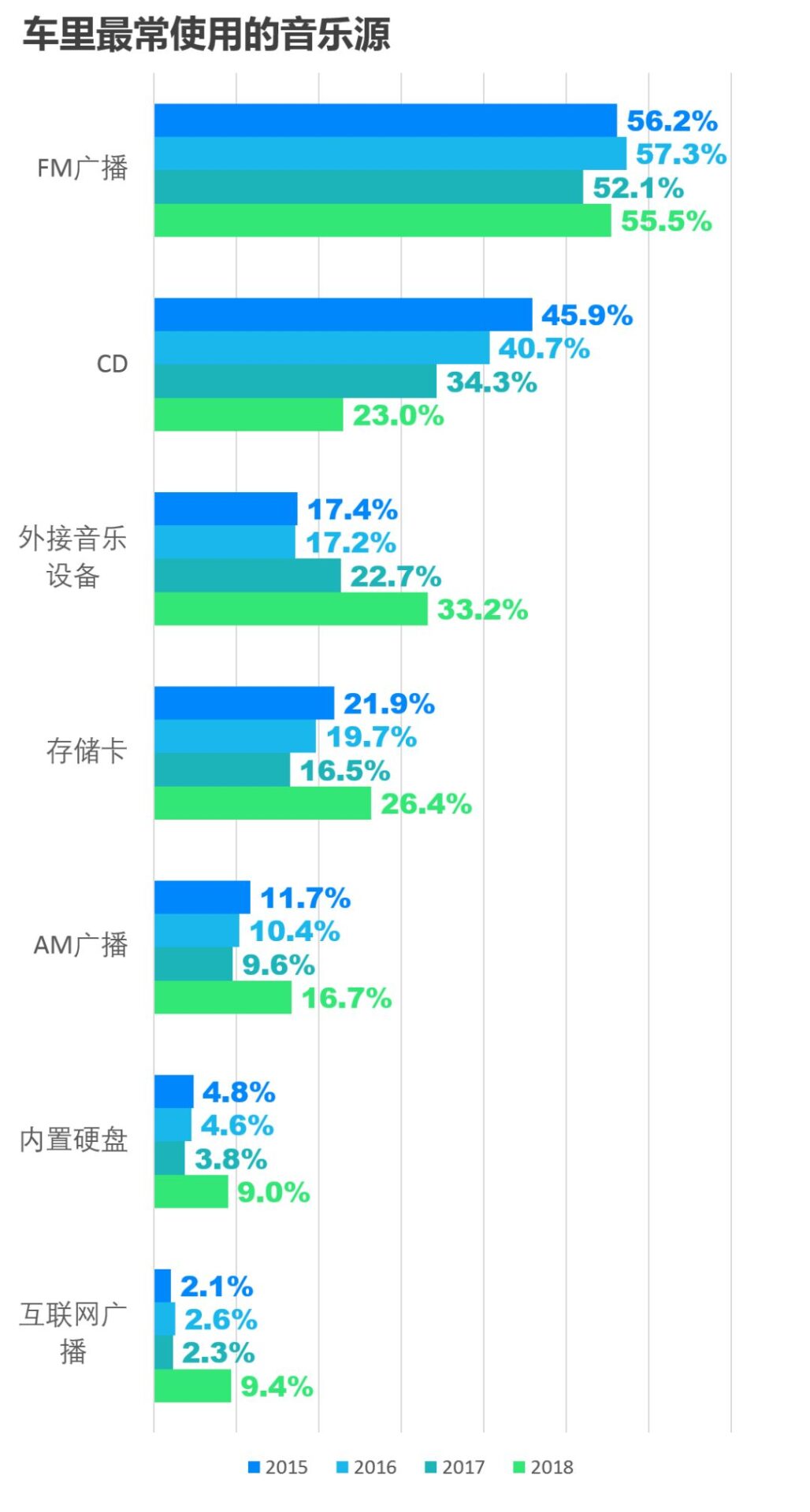
What aspects do consumers focus on when evaluating entertainment systems?
There are slight differences in evaluations among various sub-markets. Luxury car owners and SUV market owners tend to focus more on the evaluation of communication systems and voice recognition systems, while owners in other sub-markets pay more attention to the sound quality and control performance of audio systems. Specifically for automotive sub-markets, consumers mostly focus on “playing external music devices” in audio systems. In terms of communication voice, consumers have higher expectations for “hands-free call quality”. For navigation systems, the “effectiveness of navigation system route guidance” and the “ease of operation of the navigation system” are key points of consumer concern.
Collaborating with J.D. Power to Create the Perfect “Third Living Space”
The application of new technologies will usher in a new era for entertainment systems, where various components will be integrated to form a digital cockpit. Different functional subsystems, sensor data, and artificial intelligence technologies will bring significant changes to in-car HMI. As a large number of new digital technologies are integrated in the future, users will pay more attention to the interaction perception and service experience of the vehicle. User demands will be relatively amplified in this process. In the future, J.D. Power will also focus on user experience, placing people at the core, helping enterprises explore and solve user experience issues in the multi-touchpoint interaction process.

(Long press the QR code to learn about J.D. Power’s human-computer interaction system solutions)
In 2019, J.D. Power will launch a human-computer interaction system improvement and enhancement (HMI) consulting project. The HMI product strategy consulting project will leverage J.D. Power’s human-computer interaction system user research data to deeply explore the value of user perception data in “human-centered” user travel scenarios, combined with the development trends of automotive intelligence, connectivity, and sharing technologies, helping automakers and HMI component manufacturers define design strategies for HMI products in different travel scenarios. If you want to learn more about the human-computer interaction system improvement and enhancement (HMI) consulting project, please leave us a message or email us at:[email protected]

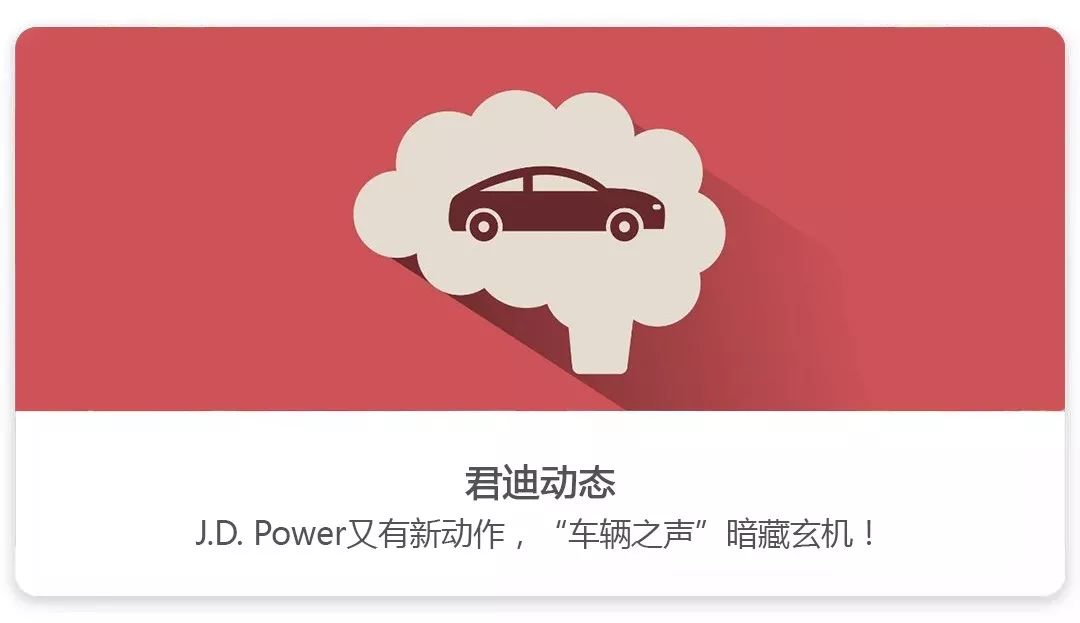



Click “Read the original text”
to view the intelligent connected vehicle HMI consulting product